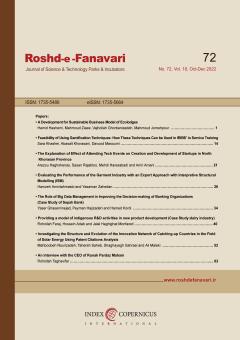-
-
List of Articles
-
Open Access Article
1 - A Development for Sustainable Business Model of Ecolodges
Hamid Hashemi mahmoud ziaei Vajhollah ghorbanizadeh mahmoud jomehpour -
Open Access Article
2 - Feasibility of Using Gamification Techniques: How These Techniques Can be Used in IRIB’S in Service Training
sara khashei abolfazl khorasani davood masomi -
Open Access Article
3 - The explanation of effect of attending tech events on creation and development of startups in North Khorasan province
Arezou Haghshenas Sasan Rajablou Mehdi Haresabadi امیر امانی -
Open Access Article
4 - Evaluating the performance of the garment industry with an export approach with Interpretive Structural modelling (ISM)
Hamzeh Amin-Tahmasbi Yasaman Zahedan -
Open Access Article
5 - The role of big data management in improving the decision-making of banking organizations (Case study of Sepah Bank)
Yaser Ghasemi Nezhad peyman hajizadeh Hamed Kordi -
Open Access Article
6 - Providing a model of indigenous R&D activities in new product development (Case Study:dairy industry)
seyed rohollah faraji hossein adab jalal haghighat monfared -
Open Access Article
7 - Investigating the structure and evolution of the innovation network of catching-up countries in the field of solar energy using patent citations analysis
Mahboubeh Nourizadeh Tahereh Saheb Shaghayegh Sahraee Ali Maleki
-
The rights to this website are owned by the Raimag Press Management System.
Copyright © 2017-2026







